In the spring of 2008, the Tate Modern opened the world’s first major public museum display of graffiti and street art, inviting six international artists to decorate its facade with enormous, eye-catching murals.
Meanwhile, just down the riverbank at Southwark crown court, eight members of London’s well-known DPM crew were tried for an estimated £1m in graffiti-related damages across the country, and sentenced to a total of 11 years in prison – the biggest prosecution for graffiti that the UK has ever seen.
The Anti Social Behaviour Act of 2003 defines graffiti as “painting, writing, soiling, marking or other defacing by whatever means”. Anything from a quickly executed “tag” to a detailed mural could be deemed illegal, and the artist subject to a £5,000 fine or prosecution. But despite this clear-cut definition, there are double standards in the way graffiti is perceived, and the law creates pockets of permission for some artists while penalising others.
In December 2013, for instance, a magistrate glowingly used the phrase “the next Banksy” to describe a Manchester graffiti artist who ultimately avoided jail. But when sentencing London tagger Daniel “Tox” Halpin to a 27-month jail sentence in 2011, the prosecutor told the jury: “He is no Banksy. He doesn’t have the artistic skills.” (A commemorative Tox mural by Banksy appeared in Camden soon after, and was quickly protected by Perspex casing.) But this authoritative distinction between “good” and “bad” graffiti does not have a place in the rulebooks.
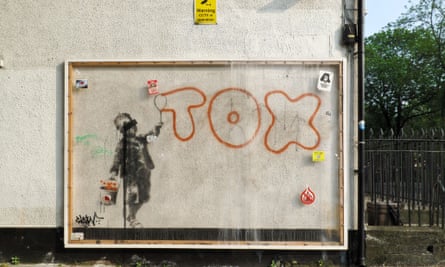
Since its contemporary birth in 1960s Philadelphia, city leaders have tended to condemn graffiti as mindless vandalism. Policing later began leaning towards the “broken window” theory, which argues that if petty crime like graffiti is visibly ignored, suggesting general neglect, it could inspire more serious offences. The UK spends £1bn on graffiti removal each year.
But as cities seek to “clean up”, could graffiti’s ephemeral role within the urban environment actually be good for cities?
For Ben Eine, a graffiti artist whose work was gifted to Barack Obama by David Cameron, graffiti leads not to drug deals and robberies, as the broken windows theory suggests, but to something very different. “If they [councils] stopped painting over them, they would get tagged and then they’d do silver stuff over it. And then eventually, people would do nice paintings over it … The natural evolution of graffiti is that it will just turn out looking nice,” he told the recent Graffiti Sessions academic conference.
Adam Cooper, cultural strategy officer for the Mayor of London, thinks graffiti is a positive force in its own right. He questions whether graffiti artists are vandals or “pioneers of a new kind of visual arts”, and suggests that the mayor’s office could provide more spaces for graffiti, as they do for buskers. Citing the success of the recent Long Live Southbank campaign to preserve the skate park, as backed by Boris Johnson, Cooper says graffiti adds “social communal value” to the Undercroft space – though he is quick to point out that the mayor’s office are in no rush to change the law.
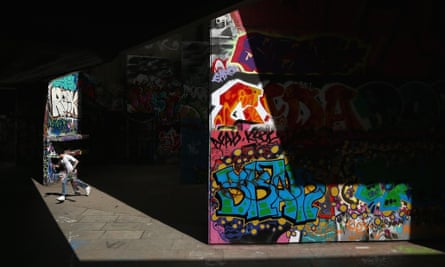
While Boris might not be seen wielding a spray can anytime soon, in Bogotá, mayor Gustavo Petro was forced to change the laws after public outrage over the police shooting of 16-year-old graffiti artist Diego Felipe Becerra. Seeing the tension between artists and city police, Petro opted to promote urban art as a form of cultural expression, and decriminalised graffiti. Certain surfaces like monuments and public buildings are off-limits, but otherwise artists in Bogotá now have the freedom to colour the city without fear of prosecution.
Embracing graffiti’s cultural value can do wonders for a city’s tourism industry, too. In Bristol, the 2012 See No Evil festival saw 50,000 people flock to the streets; in Stavanger, Norway, the city walls are transformed into a canvas for the highly successful annual NuArt festival. Even without a dedicated event, for every painted wall in a city there is most likely a tour to go with it. A three-hour graffiti walk around the streets of Shoreditch could set you back £20, and in colourful Buenos Aires a tour of the decorated walls can cost $25 (£16).
Buenos Aires is a particularly fascinating example of a city where the walls talk, telling tales of a turbulent past. Here, graffiti has been continuously harnessed as a tool of political communication, resistance and activism by citizens caught up in a cycle of military dictatorship, restored democracy and economic collapse. Although there are laws prohibiting graffiti, the city has gained worldwide recognition for its urban art. Now a new bill proposes to assign a registry of graffiti artists to designated spots in Buenos Aires, with the aim of decreasing undesirable markings elsewhere.

A similar approach has been adopted in Toronto, where a Graffiti Management Plan sees that “graffiti vandalism” is removed by city staff, while “graffiti art and other street art that adds vibrancy” may remain if commissioned by the building’s owner. Toronto council has even assigned an official panel of specialists to judge the value of graffiti, deciding whose markings are artistically worthy to grace the city’s bricks.
Transport for London workers had no such critical pretensions when removing a Banksy piece from a wall near Old Street Station in 2007. “Our graffiti removal teams are staffed by professional cleaners, not professional art critics,” said a TfL spokesperson. Still, Toronto’s specialist panel could help avoid the embarrassing mistakes made by other cities that have sometimes been overzealous. In Melbourne, a builder accidentally drilled through a Banksy stencil thought to be worth more than A$50,000 (£26,500), and in London, Hackney Council requested that a mural created by the Belgian artist ROA be removed from the facade of a recording studio, despite being commissioned by the building’s owner. A petition signed by more than 2,000 people spurred the council to back off.
British law is clear that an artist’s work may be removed by the council if deemed a blight on the environment, even if it has been given the go-ahead by the property owner. Instead, many councils designate “legal spots” for artists to paint. But the quarantined nature of these spaces embodies the very essence of what many graffiti artists seek to challenge. Does this legitimacy ruin their fun?
“Legal painting? It’s just not the same feeling,” says Glynn Judd, a former train writer who now only paints in legal spots since his “NOIR” tag had him thrown into prison. “Graffiti is always about being slightly naughty … It’s a different mindset from painting legally.”
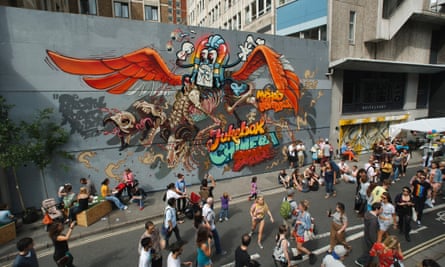
Legal walls may fail to excite some artists – “It’s the tiger in a cage v the tiger running free through the jungle,” says one – but they do offer a space for social intervention, where artists can act as mentors, using graffiti as a force for community cohesion and a potential route out of crime for inner-city kids. Since leaving prison, Judd is now regularly invited by local councils to run workshops, engaging and inspiring kids to “realise their potential”, both artistically and socially. “It’s about ownership and respect, it gives them an identity,” he says. “It’s a channel of energy to get rid of emotion.”
Legal or not, as graffiti seeps into the fabric of neighbourhoods, it becomes a natural fact of everyday life in the city, a cultural practice appreciated and legitimised by young urban dwellers. Simultaneously, it is harnessed by local authorities and property owners as a method of cultural branding, to create the sort of “poor but sexy” neighbourhoods that work so well for cities like Berlin. Active curation of street art really got into full swing in pre-Olympic London when the work of a local crew was scrubbed from the walls of the River Lea Navigation to make way for street art by several international artists, specially commissioned by the Olympic legacy’s public art body.
This “gentrification graffiti” is representative of the cycle of transformation in cities across the world, whereby artists are caught up in contributing to their own displacement. Speaking of his early days as an illegal artist, Eine says he “probably started the gentrification process” with his relentless painting in Shoreditch and Hackney.
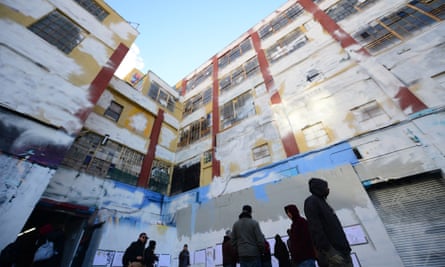
So do councils truly care about nurturing the creativity of graffiti artists, or is their work seen as means to a gentrified end? Writer Feargus O’Sullivan thinks of the presence of artists and creative workers as adding a “cursory sheen to a place’s transformation”, describing the process as “artwashing”. Places infused with creative production are marked as “ripe for investment and remarketing to a new kind of customer”, thus contributing to an artist’s own demise in the name of improving – or rather financially gaining from – the city.
From its roots as a means of visual communication for disenfranchised youth to both hide and be seen, graffiti has developed into a bona fide art form, a legitimate force for economic, cultural and social good – and, as we continue to shift towards increasingly sanitised urban environments, one of the few remaining ways we have to respond to our surroundings in an expressive, public way. “Good” v “bad” graffiti might continue to be disputed between fervid councillors, but Eine says the public have moved on. “The whole world is covered in graffiti. No one cares. It’s just part of urban noise.”
Click here to watch presentations from the Graffiti Sessions conference, organised by UCL Urban Laboratory and the Graffiti Dialogues Network.
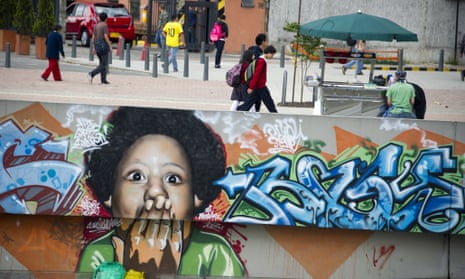
Comments (…)
Sign in or create your Guardian account to join the discussion